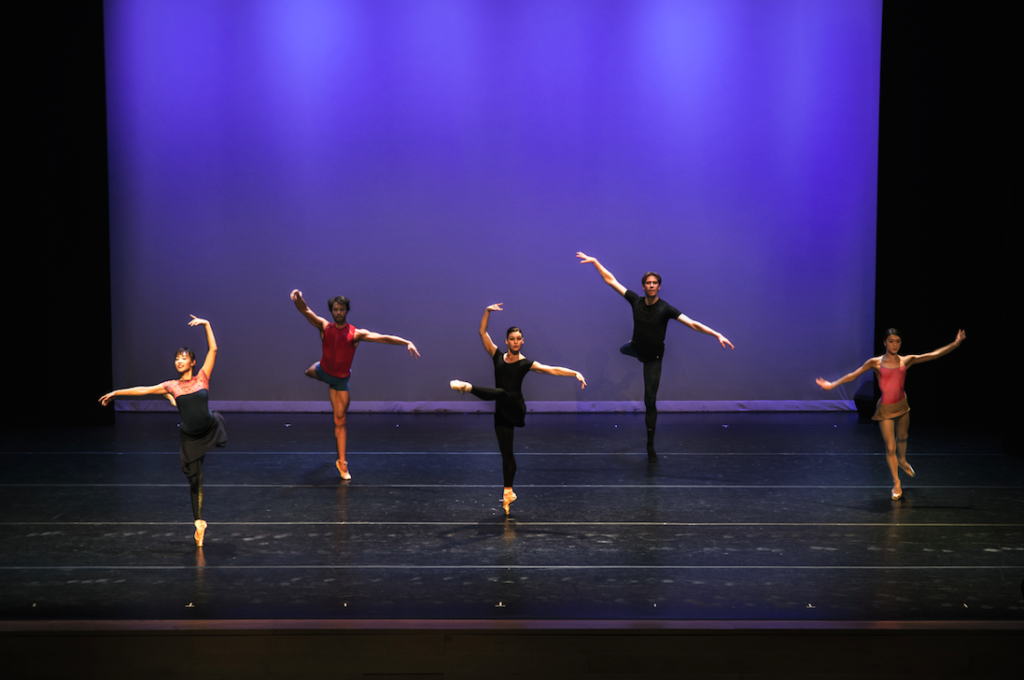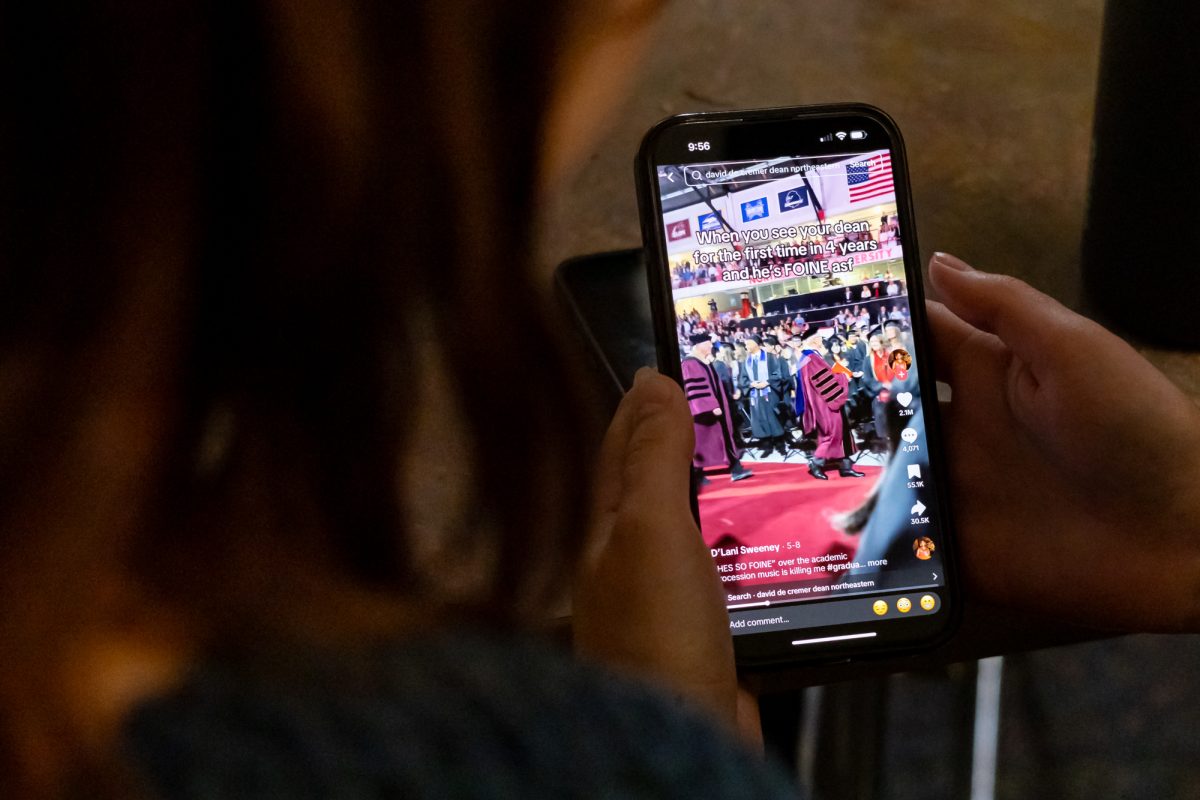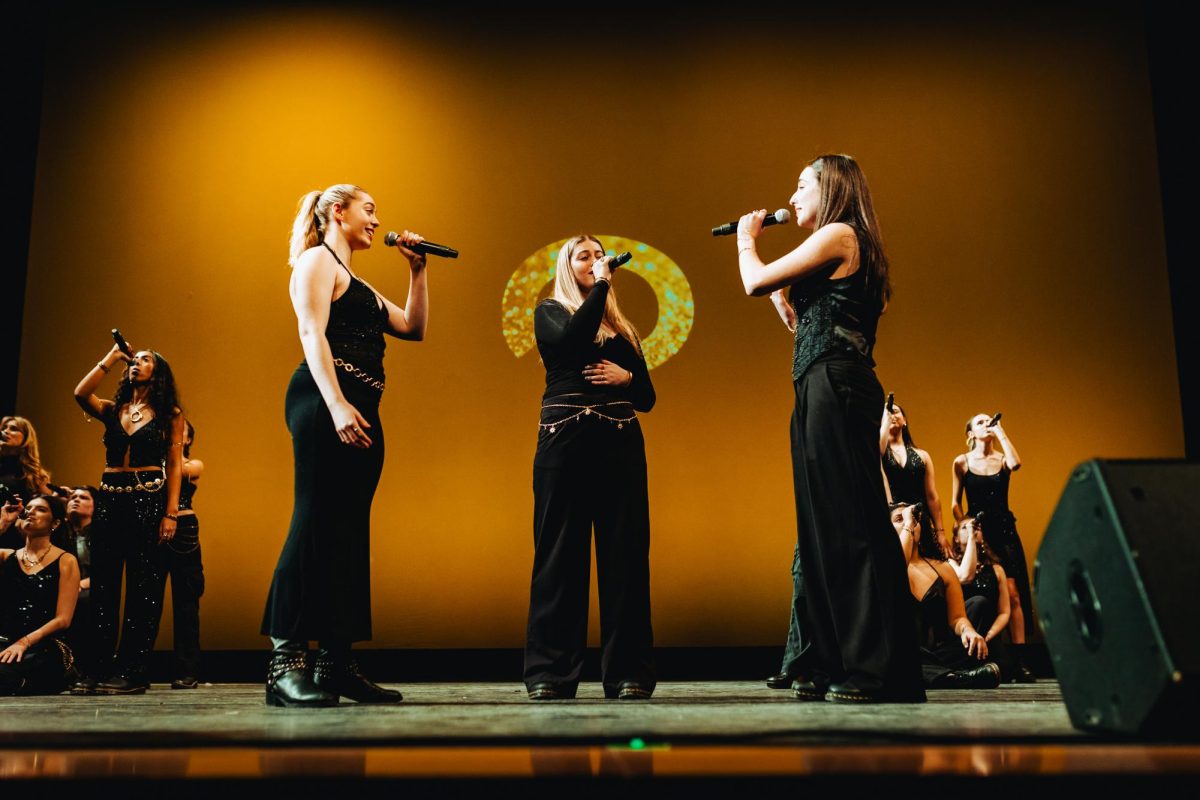By Megan O’Brien, news correspondent
Boston Ballet swapped out its usual venue for Blackman Auditorium on Feb. 4 to give Northeastern students and faculty an exclusive glimpse of its work.
The event was hosted by the Northeastern University-Boston Ballet Education Program, a joint program between the College of Professional Studies and Boston Ballet. This program was launched in August 2013 and allows members of the Ballet to earn a degree in six years.
“I’m blown away that of over 60 dancers, 22 are in this program,” Boston Ballet Artistic Director Mikko Nissinen said.
To start the program, the audience got a glimpse of what rehearsals look like as Harvard Dance Director Jill Johnson staged William Forsythe’s “The Vertiginous Thrill of Exactitude.” Five company members in leotards began to practice the routine. They moved with loose arms and ballerinas rose to the balls of their feet versus traditional pointe. Even with half the vigor it was apparent the choreography is fast-paced and requires precision.
“There was one woman in the San Francisco Ballet who said shewould rather give birth than dance [“The Vertiginous Thrill of Exactitude”] one more time,”Johnson said. “But I try not to tell the dancers that.”
After a few minutes, the group tried the piece at performance level. Once the music paused, Johnson softened her voice and began a list of corrections.
“Watching Jill [Johnson] direct was amazing,” Katelyn Flick, a research technician in the psychology department at Northeastern who attended the performance, said. “When she said things like the fact they were flinging their arms, that was something I would never have caught.”
A performance of Hans van Manen’s “Black Cake” was next. The featured duets were more contemporary than Forsythe’s work. The women donned knee-length black dresses and ballroom shoes, while the men wore slacks, button-down shirts and jazz shoes.
“The thing with Hans van Manen is it’s always a relationship between a man and a woman. It’s always a conflict,” Anaïs Chalendard, a company dancer for Boston Ballet, said. “Mine with Isaac [Akiba] is about insecurity.”
Chalendard and Akiba moved in a slow and controlled manner, in contrast to Erica Cornejo and Jeffrey Cirio. Cornejo and Cirio’s dance portrayed the comical aspect of van Manen’s work through realistic and often jerky movements. The number concluded with her yawning as he dragged her offstage.
The dancers then slipped into street clothes backstage as they prepared to interact with the audience for the remainder of the program. The conversation began with a discussion, guided by Nissinen, about Forsythe, van Manen, classical and contemporary ballet and how dancers work their way up to the Boston Ballet.
For example, Akiba was born in Jamaica Plain and studied dance in Boston his entire life, while Chalendard began dancing in her hometown near Lyon, France. She went on to dance in Germany and England before coming to Boston.
When the discussion opened to questions from the audience, many asked about life after dance.
“The window opens and the window closes. You have twenty years of professional dancing if you’re lucky,” said Nissinen.
Johnson, a former principal dancer with the New York City Ballet, noted dancers like Wendy Whelan are finding ways to dance into their 40s and 50s, but has seen others transition to careers in medicine, education and filmmaking.
“It’s like how now people change jobs,” Johnson said. “A dancer’s career mirrors what is happening in our culture.”
Whitney Wallace, a sophomore neuroscience major, grew up taking dance and consequently had an appreciation for the program.
“I thought it was fabulous. I’ve gone to the Opera House to see shows, but through student tickets so the seats are way in the back,” Wallace said. “Seeing them up close, and all of their facial expressions, was great. I’m so glad I got to see Jill Johnson direct them.”
As the program drew to a close, Nissinen said he wanted to leave those in attendance with two things.
“Dance doesn’t communicate through the language of reality, but illusion,” Nissinen said. “When you watch dance, it is not about watching. It is your awareness and what it means to you. It’s your inner monologue.”
Photo by Arzu Martinez









